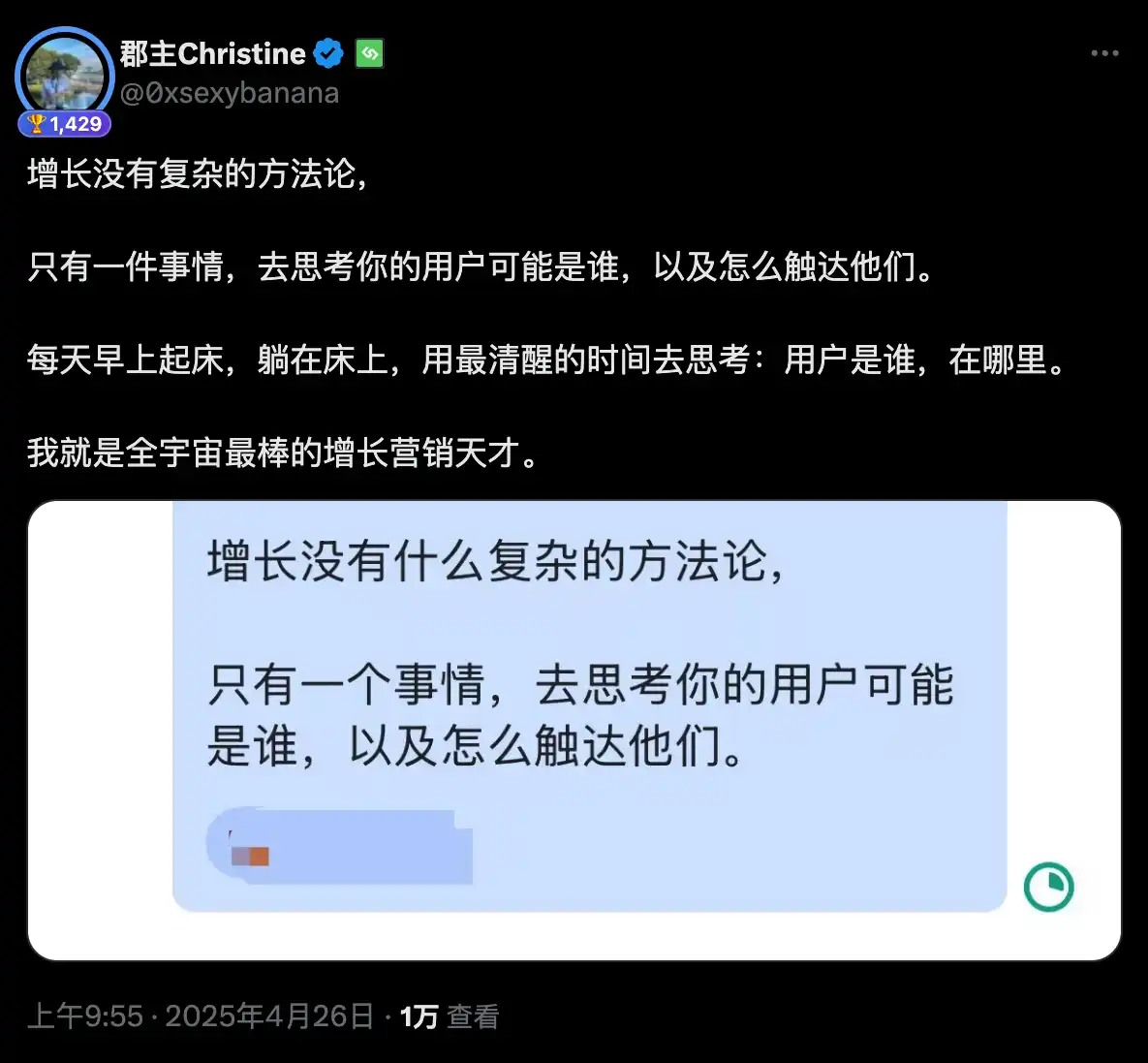Exclusive interview with Infini Lianchuang Princess: Why did we shut down the U card business?
On June 17, Infini announced the official cessation of its encryption card business for individual users. For many users, this decision was very sudden; but for the Infini team, this was actually a decision made after a long period of consideration.
Crypto cards, which were once highly anticipated, are now increasingly labeled as difficult to make and a thankless task. Compliance barriers, cross-border clearing, risk control… these issues that sound like they should belong to traditional financial institutions have become a reality that these Web3 entrepreneurs have to deal with head-on. Between resource investment and business returns, Infini finally chose to press the end button for this business.
What happened behind the scenes? What are the specific difficulties in the implementation of the U card business? Why are the compliance costs so high? With these questions, BlockBeats interviewed Christine (Junzhu), co-founder of Infini. Through the narration of the front-line operator, we can see the full picture of this business adjustment.
The following is the interview content.
The starting point of the U card story: When NFT players fell in love with simple DeFi
In May 2024, Blast launched the dividend-paying stablecoin USDB. Users only need to hold USDB to obtain capital gains generated by its underlying assets, attracting a large number of NFT community players to deposit their assets on the Blast chain. Tieshun, a top entrepreneur in the NFT circle, has made many NFT players feel the charm of simple DeFi through a stablecoin product.
During the same period, Ethena opened up the arbitrage income of Funding Rate Arbitrage to Retail Users through USDe, and also opened up complex blockchain income opportunities to ordinary people.
It was during this period that the princess and Christian, who came from the NFT community, saw the potential of stablecoins. They believed that this was an entrepreneurial direction that would allow ordinary people to enjoy the benefits of blockchain and had great potential to break through the circle, so they decided to do something in this field.
At that time, the industry was not discussing stablecoins very much, and Infini was definitely a pioneer. However, the difficulty of starting a stablecoin business was far beyond their expectations. This field was completely different from the relaxed entrepreneurial atmosphere of Web3 in the past. What the princess and Christian had to face was the cruel cost reality and the old money world that was difficult to shake.
Infini Origins
BlockBeats: What was Infini’s initial motivation and intention for starting a business?
Princess: We first started working on Infini in July last year. At that time, stablecoin financial management was quite popular. We saw that Blast had created a stablecoin called USDB, which had an APY of about 5%-10%.

We found that many Gamefi and NFT users are interested in USDB. In fact, these people did not understand the income of DeFi before. Blast packaged the complex and abstract DeFi income into this stablecoin through USDB. As long as users hold this stablecoin, dividends will be automatically paid.
DeFis income actually comes from many aspects, such as lending, RWA, etc. We found that many people are actually interested in a stablecoin like USDB, which is a bit like a synthetic asset. This means that there is a demand for simplifying complex on-chain income and opening it to the public. This is actually the reason why we wanted to do Infini in the first place.
In fact, we had this idea in May last year. Because I am also a deep player of Blast, I think he did a very interesting thing, which is to introduce DeFi products to the user groups of NFT and GameFi. It was also around that time that I found that many people around me suddenly started talking about stablecoins, and many institutions were interested in stablecoins at that time.
This incident inspired me, and I think I must do something to expand the circle. NFT is popular because it brings many new users into the Crypto circle; Blast is popular because it brings NFT users into the DeFi circle. Blast has indeed done something very meaningful. I have seen many people begin to understand DeFi through Blast, and it has played a role in educating the market.
We actually wanted to do stablecoins at the time, but we found that this track was too competitive. And we didn’t think we had the same strength as Ethena in terms of funds, team, resources, etc. So we were thinking about how to compete in a different way.
At that time, we were thinking about the main use cases of stablecoins. Thinking along the lines of its usage scenarios, we returned to a very original idea: we invented currency to use it.
So we thought we might as well start with payment.

Our initial idea was to create a stablecoin ourselves, and all Infini U card users use our own stablecoin for payment.
We also learned about the costs of USDC and USDe. The cost of USDC is very high, and they are already pioneers in the industry. I think USDe is a genius player, but Binance still does not support USDe trading pairs. This shows that it is very difficult to push a new stablecoin into mainstream exchanges. So why dont we start with small and beautiful scenarios and let everyone use it from daily consumption. After all, the most important functions of stablecoins are two: either support transactions or support payments.
BlockBeats: So after the research, you think that it takes a very high cost to make a stablecoin, then why do you think it doesn’t take such a high cost to make a U card?
Princess: Because we think that U Card doesn’t require too many resource costs, such as distribution channels. We can promote this card through the growth strategy of to C. It turns out that we did promote this U Card at a very low cost. But it’s different to make stablecoins. You need extremely strong resources to back it up. We don’t have a soul figure like Arthur Hayes.
We are a relatively grassroots startup company. For a relatively grassroots startup company, the lack of top-level resource support is a big shortcoming.
BlockBeats: It’s actually very interesting, because from a structural perspective, Infini has actually launched its own stablecoin, but it is not packaged in the shell of “USDe”. The application shows “USD”, but behind it is actually something very similar to a stablecoin.
Princess : Yes, I think it doesn’t make much sense to package it with a shell. Although packaging will make the company’s valuation higher, the valuation of a stablecoin will definitely be higher than that of a U card company, right? But if you don’t run PMF for the sake of packaging, I think it will waste time, so I would rather run the business first, and then think about packaging after achieving PMF.
U card business
BlockBeats: After the U card business project was launched, what preparations did Infini make?
Princess: After the project was launched, we first did some research because our company knew nothing about payment. The first person we asked was Yishi from OneKey. He was very nice and someone we knew who had worked on U cards, so he had a lot of valuable experience.
Yishi also shared a lot, including the cost of this business, how to acquire customers, why it was shut down, etc. As for the closure, he gave the reason that the compliance requirements were relatively high. I didn’t pay much attention to it at the time, but now I think it’s actually quite accurate. Because I thought compliance was too simple, I thought as long as I didn’t touch anything illegal, there would be no problem, but in fact, compliance has many hidden costs.
BlockBeats: At that time, you didn’t realize that compliance issues would be so troublesome to deal with, right?
Princess: Yes, we were very clear at the beginning of our business that we should not do anything illegal or cross the red line. However, in the process of expanding our business, we found that the compliance requirements of this business and the license costs required in the compliance process are very high, not to mention that there are many invisible compliance costs.
BlockBeats: What are the aspects of compliance costs for companies that make U cards?
Princess: First of all, you need a very professional legal team. A good legal team is very expensive. Secondly, the cost of applying for a license is also very high. If you cannot obtain some licenses, you have to acquire other companies. Take Hong Kong as an example. The MSO license is now strictly controlled, so if you want to get it, it is best to acquire a shell company. The specific price depends on the other partys offer. Now it costs about three to four million Hong Kong dollars to acquire a license.
In addition to money, communication time is also a huge hidden cost. It depends on the specific situation. Some can be completed in a month or a few weeks, while others may even take several years. Each region and each license is different. We hired a dedicated legal officer to do these things from the first day of the project.
We didn’t expect that compliance would require so much effort at first. Because we wanted to follow the compliance route, we didn’t consider the issue of return on investment and got the license regardless of the cost. In this respect, it is indeed very different from many Web3 projects. We gradually felt that we are actually a FinTech company. We are actually doing payment, not Crypto.
BlockBeats: Do you feel that you have over-expanded your efforts on the U card business? Have you ever regretted it?
Princess: This is a very good question. In fact, if you do something with positive feedback, it is difficult for you to realize that it is wrong, and you will want to keep doing it. Because our user growth is very fast, I am addicted to watching the data growth every day.

Our company sets an OKR before doing anything. At the beginning, the underlying assumption of our entire business logic was that as the number of U cards increased, our TVL would also increase. We thought that there should be a clear correlation between the increase in the number of card users and the increase in TVL. So we took the increase in the number of card users as a North Star indicator, so much so that I gave up the pursuit of TVL for a long time.
But later we found that this was not true. The number of users was indeed growing rapidly, but the TVL did not increase significantly. We found that although we drove very fast on this train, we drove in the wrong direction. Our initial business assumption was wrong. We thought that the more users liked to use the card, the more money they would deposit into the account. But in fact, peoples habit is to deposit money when they need to spend money.
BlockBeats: How much money do you make from the U card business?
Princess: Net loss, didn’t make a penny.
BlockBeats: Would you mind becoming a FinTech company?
Princess: I don’t mind us becoming any kind of company, even a yoga clothing company. The key is that the company must make money, and we cannot deviate from the essence of business. The essence of business is to make money in a long-term and effective manner. Obviously, the U card business is a pure waste of manpower, material resources, financial resources, and energy for us. If a business is always consuming but cannot make money, it needs to be killed.
BlockBeats: When did you start considering shutting down the U card business?
Princess: In May, I wanted to slowly stop this business, at least stop doing related growth work. The core reason was that the refund of our card was very slow at the time. Generally speaking, the refund of normal international cards takes about one to two weeks, but some of our refunds have taken four weeks, one month, or even one and a half months. We would repeatedly urge the upstream channels, but they just wouldnt refund. We were bombarded with such customer complaints every day, and we were actually very helpless because we were at the downstream of the industry. Apart from urging the upstream channels, I couldnt do anything. I was powerless.
This caused me nearly two or three weeks of internal friction.
It is not difficult to start a U card company. I think anyone can do it as long as they have money, time and patience. The threshold is not high. If you want to comply with the regulations, you have to spend money; but if you don’t comply with the regulations, anyone can do it. In essence, you only need a hosting company, and then find an upstream company that provides a card group API. After you connect to the API, you can issue a card.
Almost all cards on the market now do this, but no one knows how many layers of upstream there are. Some may cooperate directly with the card group, and some may have layers of middlemen, like an onion, and can even be stacked infinitely. For example, we can actually make an API open to you, and you can make another API open to others.
We have been working on the U card for several months now, and the more we do it, the more I feel that Infini is taking a historical step backward in the U card business. I personally hope to break the traditional payment barriers, but the U card converts stablecoins into USD, transfers it to the bank, and users then swipe their bank cards, which actually goes back to the old path of traditional financial payments. This is also the reason why I made up my mind not to do it anymore, because I think it is wrong to do so.
For example, the refund issue mentioned earlier made me feel very frustrated because I realized that the U card did not really change any logic of this industry. It is just a traditional payment solution, not the final solution.
BlockBeats: Do you think U card is a real need now, or is it just a reluctantly accepted solution?
Princess: If you can directly use USDT or USDC to pay for a hamburger, do you still need to withdraw money? It is because this demand cannot be met now, so everyone found an intermediary called U Card to meet this demand.
I think U Card is a real need, but it is not a final solution. I think big products like ChatGPT, OnlyFans, and Twitter will definitely accept stablecoin payments in the future. This is the general trend. When they all accept stablecoin payments, there will be no use case for U Card.
Recalibration, what will Infini do in the future?
Helping users make DeFi simple is the starting point of Infinis entrepreneurship. After fading out of the daily consumption of cryptocurrency users, the team returned to this original intention. Now, Infini is ready to put its attention back on on-chain income and financial management. This is a different entrepreneurial direction from stablecoins and encrypted payments, and the team still faces many new and old problems to be solved. For example, how to position the Infini brand? After experiencing the theft and business closure, how can Infini rebuild trust with users?
But the princess and the team are determined to change direction: Infini must not reverse history, and stablecoins and encrypted payments cannot return to the traditional banking system. Use Stable Coins Directly, this is the future.
BlockBeats: After shutting down the U card service, what is Infini’s current positioning?
Princess: We have two things to do now. The first is to do well what we planned to focus on at the beginning of our business, that is, financial management. Our current financial management income mainly comes from on-chain lending. With the arrival of the bear market and the decrease in on-chain activity, its income will definitely decrease. In a bull market, there may often be a day with an APR of 40%+, and in a bear market, it may only be 2%. Therefore, we need to access some CeFi to make the income more cyclical, disperse the risks, and become a more comprehensive fof, a Yuebao that users can use with peace of mind.
This is actually what we wanted to do from the beginning, to simplify the complex revenue and open it to the public, but this matter was taken further and further away by payment, so that we have not spent any time on our core business in the past few months, and this core business can bring us income. So we decided to cut off payment, which takes up the longest time but does not make money.

BlockBeats: So youre not moving in a new direction, but rather returning to what you wanted to do in the first place?
Princess: We were already working on the integration of financial products in August and September last year. At that time, we wanted to integrate a variety of CeFi products, because CeFi is not easy for most people to get started. Good CeFi strategies have no shortage of funds, while bad CeFi strategies raise funds everywhere but will make you lose money.
So our idea at that time was to make the most of the scale advantage and get some relatively low-frequency and stable income financial products. Maybe an annualized rate of about 10% is very attractive to ordinary users. From Blast making complex DeFi income simple, to our current desire to open financial income to retail users, this idea has not changed, but the U card thing in the middle did lead us astray for a long time and took up a lot of time.
Therefore, the first thing we must do next is to do a good job in financial management, and make it very safe and resistant to cycles.
BlockBeats: Do you think this track will be crowded?
Princess: I think it will be crowded, but it also depends on everyone’s needs, because money will definitely flow to places with higher returns or that are safer and more stable in the long run, so we will divide financial products into different levels according to different needs.
BlockBeats: You mentioned many times before that Infini has no plans to issue coins, and you don’t want to use the prospect of issuing coins to attract new growth. Now that the business has transformed, have you made any adjustments in this regard? Or have you considered going public/backdoor listing?
Princess: Whether it is issuing coins or going public, you are actually issuing assets. After the assets are issued, they will become a liability. You need to be responsible for the Token/Share Holders. If our business does not have a stable cash flow or cannot achieve perfect PMF, hastily choosing to issue coins is irresponsible to both yourself and the community.
So I also want to answer this question very officially: In my opinion, issuing coins and listing is a means of financing and acquiring customers. We must make good use of this means and use it correctly at the right time. It is a financial tool. I will not say yes or no. We will consider using it when necessary, but it is too early now. We still need to do our own business solidly, make good products, and meet user needs in a productized way. After we have good cash flow and income, we can consider these financial operations. After all, products and PMF are the foundation of everything.
BlockBeats: As C-end users who have switched from the U card business, is there anything we can participate in after your transformation? If you completely switch to a To B business, it would be a pity to have so many users accumulated before.
Princess: Looking back on this journey, I think there are three biggest gains.
The first point is that we have built a very good team. The team is always the first priority. I believe that as long as we have the same vision and have the ability, mental and physical strength, we will make good progress after the transformation. The building and training of the team is our most important achievement in the past six months.
The second point is brand. In this circle, you must have a good reputation, which is the basis for everything you do in the future. If a person does not have a good reputation, it is actually difficult to achieve long-term growth. We are actually not interested in short-term customer acquisition and cashing out. We still hope that this can be a long-term business that will last for decades or even hundreds of years.
The third point is cognition. We still need to fully embrace decentralized payment solutions, not centralized solutions, and must not reverse the course of history. Assuming that we deploy on MegaETH or BNB in the future, users can directly open their wallets, scan the code to pay for ChatGPT subscriptions, and directly swipe the stablecoins in your wallet. This will be a very cool scene.
We should spend your stablecoins in this way, rather than through a U card. I think this kind of payment is valuable, rather than returning to the traditional banking system.
We need a decentralized payment solution like this: your transactions are confirmed on the chain, your payments are made directly through your wallet, and you pay directly with Stable Coins.
I think this is the future.
This article is sourced from the internet: Exclusive interview with Infini Lianchuang Princess: Why did we shut down the U card business?
As blockchain technology continues to evolve and ecological construction becomes the core driver of public chain development, JuChain has recently reached a series of important milestones. On May 1, 2025, with the official launch of JuChains high-performance mainnet (Chain ID: 210000), its second global hackathon was successfully concluded in Dubai, showcasing the cutting-edge innovations of Web3 built on the JuChain platform. Following this, the JuChain ecosystem will take advantage of the momentum and hold a public chain co-construction summit in Bangkok, sounding the global ecological rally call and launching a major ecological incentive plan. 聽 Dubai Hackathon: Innovative forces emerge under cutting-edge themes The second JuChain Global Hackathon, which was successfully held in Dubai, focused on two cutting-edge themes: On-chain Traffic Hub and Decentralized Edge Computing, and attracted nearly 100…







